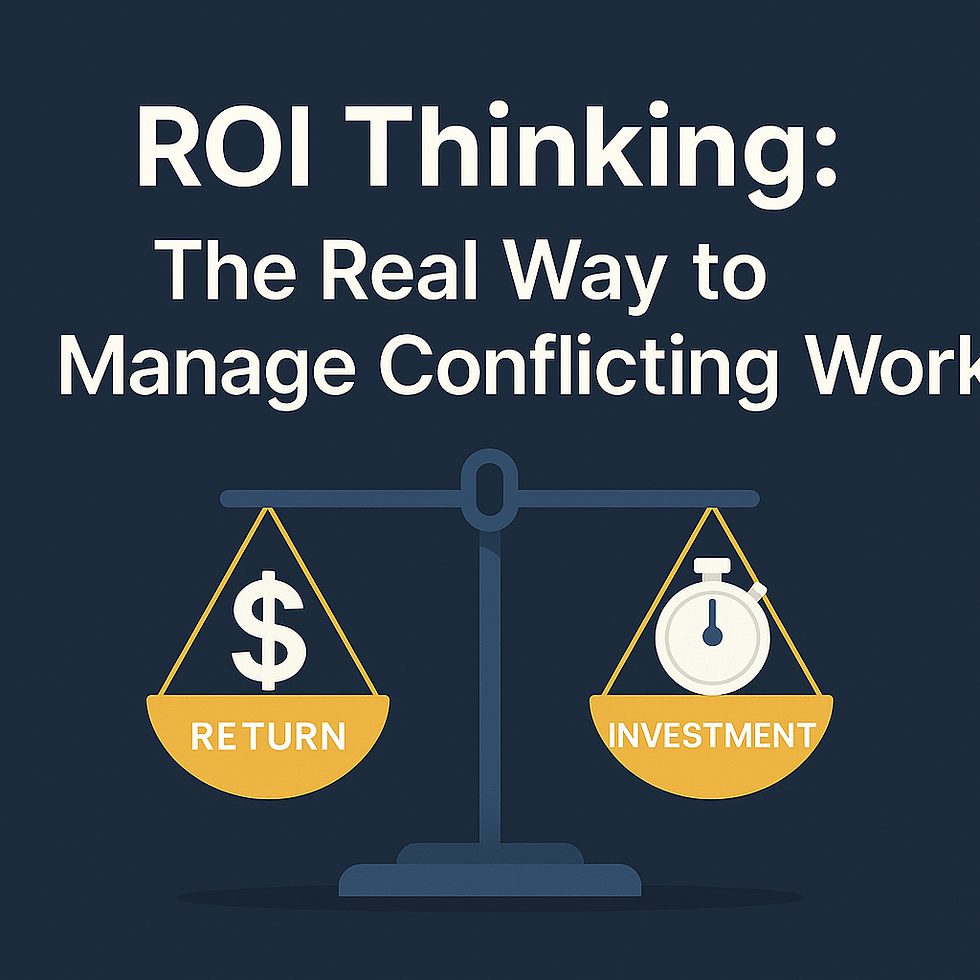In a Digital World, Physical Presence Still Builds the Strongest Relationships
- Admin
- Apr 27
- 4 min read

Not a complaint. Not nostalgia. Just a clear observation from real life —Even in the AI era, physical movement continues to build what digital interactions often can’t: relationships, trust, and transformation.
In a world that’s increasingly virtual, it’s tempting to believe that showing up doesn’t matter anymore. But again and again, in both personal and professional spaces, we find that the opposite is true.
The act of moving toward someone — across miles, cities, or even departments — still has unmatched power.
Let’s explore that through two clear lenses: personal space and professional space.
In Personal Space: We Move Without Being Told
We instinctively do it here. We don’t need a theory. We’ve seen it in life. We’ve seen it in movies.
There’s emotional distance between two people — maybe a love interest, maybe a partner.Say there’s a conflict and there is no certainty that things will work out between them.
And then one of them travels.
They take a journey — literally.They hop on a train. Drive across states. Show up unannounced in front of their partner.
That movement becomes a turning point. It flips the emotional equation.
The conversation changes. The weight of that effort is felt. Something that didn’t exist before — now it does.
This isn’t poetry. It’s deeply human.
Because a visit says what 100 chats or 50 video calls cannot. Even a simple presence makes the connection real, makes the care visible.
And the reason we act this way? Because we only get a few of these kinds of relationships in our lifetime. We move when it matters.
In Professional Space: We Pause — Even When It Might Matter Just As Much
Now let’s move to the work side — where the same principle applies, but our behavior shifts.
There are at least three distinct settings where movement, presence, and physical effort could completely change the outcome — and yet, we often might hesitate to take the step.
Let’s look at each.
1. The RFP That Didn’t Work — Until You Showed Up
You're a startup. You submit a proposal. It doesn't make the cut. The buyer never even considers you.
You could stop there. Most do.
Or — you fly to their office. You ask for 15 minutes in person. You walk them through the real story. You clarify what didn’t translate well in writing.
Suddenly, you’re not a proposal. You’re a presence. You’re a conviction they can now feel.
And that alone might turn a closed door into a million-dollar contract.
2. The Conference That Could Have Been Skipped — But Became a Spark
You consider a domain or industry event. Everything is available online anyway. Decks. Talks. Recordings.
But you decide to go.
You meet 10 people. One of them stays with you. Their growth becomes something you keep watching on LinkedIn.
And slowly, your own thoughts begin to shift. You start to feel it: “Maybe I should grow too.”
Growth may not always come from a learning plan, but even from an unexpected contact.
You don’t attend for volume. You attend for possibility.
3. The Cross-Functional Teams Who Never Meet — But Should
This one is subtle — and extremely common.
Engineering works with business. Or two regional teams work together. Maybe across the U.S. and India. Maybe across two cities in the same country.
They coordinate. They deliver. But they’ve never seen each other. Not even their profile photos. Just voice calls. Just Slack messages and deadlines.
And yet, one visit could open them up and make them at ease in their future collaborations.
That’s not hypothetical. That’s been proven — again and again.
One handshake removes months of built-up ego. One shared room creates context that tools can’t offer. Even a single visit leads to better tone, more patience, stronger collaboration.
And yes — in today’s world of return-to-office discussions, this matters even more.
Because physical presence isn’t just about productivity. It’s about visibility. About trust. About understanding how people think, not just what they say.
Even that once in a while visit creates clarity — not about systems, but about people.
So If All This Is True — Why Don’t We Move More?
Here’s where we shift the lens.
We’ve now seen how movement — in both personal and professional contexts consistently creates impact.
But why don’t we do it more?
Not to criticize. Just to understand.
In personal life, the motivation is already built in. You care.
In professional life?
If there’s a big deal — like the RFP — you might move.
But for the more subtle ones — like building trust with another team, or starting new conversations at a conference — the motivation isn’t obvious.
So we let it slide.
Not because we don’t care. But because we don’t immediately see the return.
And yet, time and time again, we look back and realize:
The most pivotal moments often began with a visit.
This Isn’t About Travel. It’s About Effort That Moves People
Call it movement. Call it presence. Call it walking over to a desk instead of sending a ping.
What matters is the signal.
You showed up — when you didn’t have to. You stepped forward — without certainty. You gave effort — that could be felt, not just seen.
That is what builds the strongest relationships — and always has.
Final Reflection
This is not a blog about what the digital world lacks. It’s a blog about what humans still do best.
We move. We travel. We show up.And in doing so — we create relationships, dissolve egos, and open doors that stayed closed for too long.
In the age of AI, your presence matters even more. When people become more cozy enough to move, : its value will only grow.



Comments